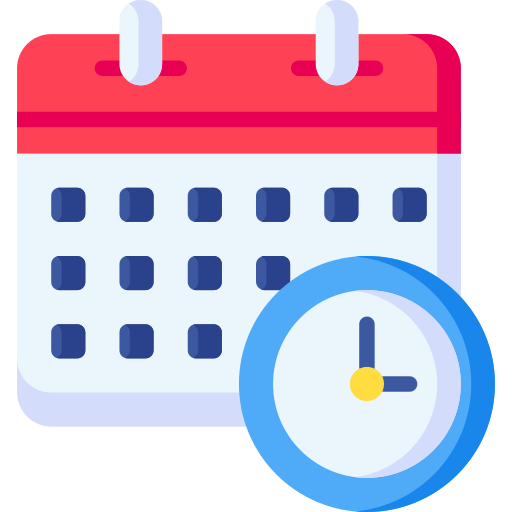7 Tips to Take Your Nonprofit’s SEO Strategy to the Next Level


Nonprofits require innovative digital marketing strategies to stand out from the crowd and reach a wider audience. Search engine optimization (SEO) is one such strategy that can help you introduce your mission to a broader group of potential supporters.
Perhaps your nonprofit already has an SEO strategy that you’ve seen some success with. Now, you’re ready to take your efforts up a notch and expand your SEO approach with more advanced techniques.
The best nonprofit website strategies use on-page and off-page SEO authority-building strategies to raise awareness of their sites and missions. Let’s review seven tips to bring your SEO strategy to the next level and help you drive more traffic.
1. Don’t overlook the basics.
As you revamp your SEO strategy, search for areas where you can optimize your current efforts. Specifically, you should ensure your front and backend content is as SEO-friendly as possible.
Verify that your content follows these guidelines:
- Include keywords in alt text for images.
- Keep titles concise and relevant, so search engines don’t change or truncate them. The recommended length for titles is between 50-60 characters.
- Keep headings and subheadings organized using heading tags. Don’t forget to include the main and secondary keywords in headings, too.
Making these updates ensures your on-page elements work together to support your SEO strategy.
Use this Free SEO Audit Tool to check the health of your website
2. Optimize content for long-tail keywords.
You probably already know the importance of optimizing your website content for more general, high-traffic keywords. These primary keywords are your most important search terms because they have the highest search volume, helping you reach a wider audience.
Perhaps you’ve already created educational website pages targeting your main keywords, and you’re wondering what to do next. At this point, you can start creating content targeted to rank for secondary keywords, also known as long-tail keywords. These are longer, more specific keywords. They tend to have a lower search volume but are easier to rank highly for because there’s less competition from other websites.
For example, if your nonprofit focuses on expanding access to healthcare in rural areas, your website content might target main keywords such as “free healthcare” and “free rural healthcare.” You can start developing additional content targeting long-tail keywords such as “how to qualify for free healthcare” and “free healthcare in [your city/state’s name].”
With this strategy, you can start picking up more traffic from individuals searching for more specific questions or terms related to your organization.
3. Create a strategic internal linking approach.
Internal links are any links in your website’s pages or blog posts that point to other pages on your website. Internal links help Google find, index and rank your content. Use these strategies to approach internal linking more effectively:
- Link to your most important, valuable pages to signal their importance to Google. These should be pages like your online resources kits, high-value educational content, or important conversion pages like your online donation form.
- Include around three to five internal links throughout every new piece of content you create.
- After you write new content for your blog, such as an educational resource, go back and add links to it in your existing content.
An intentional internal linking strategy creates clear pathways for search engines and visitors, helping them understand how to navigate your site and find additional content.
4. Improve your website’s accessibility.
One of the most common website mistakes many nonprofits make is neglecting accessibility. Accessibility is not only critical for making your website inclusive and usable for all visitors, but it’s also important for improving your SEO performance because it leads to a better overall user experience.
When it comes to web accessibility, some content types simply may never be aligned with the highest accessibility standards. However, accessibility isn’t an all-or-nothing deal; it’s a spectrum on which your organization can advance its standing.
Kickstart your updated accessibility strategy by trying to reach a higher conformance level. Conformance levels are defined in the Web Content Accessibility Guidelines (WCAG) and include levels A (the lowest level), AA, and AAA (the highest level).
For example, if your website doesn’t yet reach the first conformance level, A, review the WCAG and start updating your site based on the recommendations. If your website currently reaches the A level, try AA (the most commonly used accessibility standard).
Even just by making small, incremental improvements to your accessibility, you can greatly enhance your user experience over time. For example, you can start by making sure all of your images have alternative text, your text, and background colors have sufficient color contrast, and your website can be navigated by a keyboard.
5. Write more guest blogs.
Your nonprofit’s off-site SEO strategies are equally as important as your on-site efforts. That’s because external links or backlinks (links on other websites that point back to your website) can help boost your website’s SEO rankings. When you acquire backlinks from authoritative, trustworthy sites, search engines view your website as more authoritative as a result.
One way to build a strong backlink profile for your website is to partner with other organizations and write guest posts for their nonprofit-focused blogs. Include links to valuable, well-written content on your website in these posts.
Before launching your guest-blogging strategy, ensure your website’s internal content is robust and educational. Consider editing your older posts to feature updated links and data. Then, focus on diversifying your backlink profile. In other words, try to blog with or receive links from various sources. This can make your overall external linking strategy much stronger by showing search engines that you have a vote of approval from a wide range of organizations.
You never know who your guest blogs could reach. When you create well-written content, more people will read your posts, and you might even find yourself bringing new donors and other supporters into your existing online audience.


Streamline Your Content Marketing Process with this FREE Calendar
With this content calendar, you can start creating content that’ll help tell your nonprofit’s story, engage more donors, and maximize your marketing and fundraising efforts.
6. Increase your website’s load speed.
Slow load speeds create a negative user experience, which can adversely impact your SEO performance. Double the Donation’s nonprofit web design guide recommends taking these steps to improve your load speed:
- Compress and resize images to reduce excess data.
- Minify your code by eliminating unnecessary spaces and characters.
- Reduce the number of redirects on your site.
- Use browser caching to store copies of your site within web browsers, allowing them to load faster upon additional site visits.
Aim to reduce your page load speed to less than three seconds, Google’s recommended target.
7. Add structured data to your web pages.
Kanopi’s guide to structured data explains that this type of code offers a way to organize and add more detail to your website’s pages, giving search engines more information about your content. Structured data consists of schemas and code snippets that describe your web page content.
When you add schema to your web pages, they may appear as “rich results,” or enhanced Google search results descriptions. Rich results include featured snippets, frequently asked questions, and ratings or reviews. For example, when you search “nonprofit user experience” on Google, you’ll see this example of a featured snippet from the Kanopi website:


Rich results can help your content stand out on search results pages. By providing users with a quick snippet of information from your longer pieces of content, you can pique their interest and potentially increase your click-through rate.
You can find all of the schemas you may need on Schema.org. You can also create schemas using a schema markup generator.
Improving your nonprofit’s search results visibility can positively affect multiple aspects of your fundraising and marketing strategies. It can help you spread greater awareness of your mission, promote your events and volunteer opportunities, and perhaps even recruit new long-term supporters. Use these next-level SEO tips to drive more traffic to your site and make greater strides in your overall digital marketing plan.


About the author:
Allison Manley,
Director of Marketing & Communication at Kanopi
Allison is a recovering (and award-winning) designer who applies her creative and organizational skills to the marketing strategy for Kanopi. Her diverse, multi-disciplinary background — which in addition to design, includes glassblowing, publishing, podcasting, and figure skating — contributes to strong relationships to which she offers a broad perspective.
Her job is to tell the story of Kanopi by sharing information, writing, working with staff and partners, and keeping the brand cohesive across all channels. And since she maintains this site and wrote this, she can say she considers it a privilege to be able to work every day with fun, smart people who make her job easier; her colleagues keep clients so happy with solid work and processes that the clients, in turn, are obliging in helping Allison with case studies and positive feedback.
When not keeping the Kanopi brand on point, Allison is working on double jumps on an ice rink, chasing small children, or organizing something somewhere.





